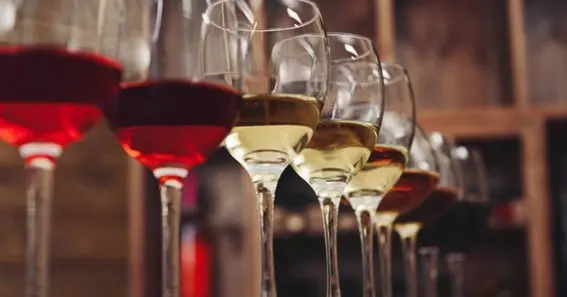Selecting a white wine that aligns with your taste preferences can be simplified by understanding the white wine sweetness chart. This guide delves into the various sweetness levels of white wines, and popular varietals within each category, and provides answers to frequently asked questions to enhance your wine selection process.
Understanding the White Wine Sweetness Chart
White wines range from bone dry to lusciously sweet, and their classification depends on the residual sugar content left after fermentation. The primary categories include:
- Bone Dry: These wines have minimal residual sugar, resulting in a crisp and dry profile.
- Dry: Slightly more residual sugar than bone dry, but still predominantly dry to the taste.
- Off-Dry: Noticeable sweetness, often balanced by acidity.
- Medium Sweet: Pronounced sweetness, suitable for those who prefer sweeter profiles.
- Sweet: High residual sugar content, often found in dessert wines.
For a visual representation, refer to Wine Folly’s Wine Sweetness Chart.
Also Read N: Understanding The Simple Subject In English Grammar
Popular White Wine Varietals by Sweetness Level
Understanding where popular white wine varietals fall on the sweetness spectrum can aid in your selection:
- Bone Dry:
- Muscadet
- Sauvignon Blanc
- Dry:
- Pinot Grigio
- Chardonnay
- Off-Dry:
- Riesling
- Chenin Blanc
- Medium Sweet:
- Gewürztraminer
- Vouvray
- Sweet:
- Moscato
- Sauternes
These classifications are general; individual producers may craft wines that vary in sweetness.
Also Read P: The “Homophobic Dog” Meme: Satire, Origins, And Cultural Impact
Factors Influencing Perception of Sweetness
Several elements can affect how sweet a wine tastes:
- Acidity: Higher acidity can make a wine taste less sweet than its actual sugar content.
- Aroma: Fruity and floral aromas can enhance the perception of sweetness.
- Tannins: Primarily in red wines, tannins can counterbalance sweetness.
For an in-depth exploration, see Wine Folly’s article on Wines Listed from Dry to Sweet.
Frequently Asked Questions
1. How can I determine the sweetness level of a white wine?
Reviewing the wine’s technical sheet or consulting resources like the white wine sweetness chart can provide insights into its residual sugar content.
2. Does a higher alcohol content indicate a drier wine?
Not necessarily. While fermentation converts sugar to alcohol, some sweet wines have high alcohol content. It’s best to check the wine’s residual sugar levels.
3. Are all Rieslings sweet?
No, Rieslings can range from bone dry to very sweet. It’s important to check the specific wine’s sweetness level.
4. How does serving temperature affect the perception of sweetness?
Chilled wines may taste less sweet, as lower temperatures can suppress sweetness perception.
5. Can food pairing influence how sweet a wine tastes?
Yes, pairing wine with certain foods can enhance or diminish the perception of sweetness. For example, spicy foods can make off-dry wines taste sweeter.
Understanding the white wine sweetness chart empowers you to select wines that align with your palate, enhancing your overall wine experience.
Enjoy this easy-to-read article what-is-a-simple-subject










